In a world increasingly defined by color-saturated digital experiences, certain cities stand as powerful reminders of earlier aesthetic sensibilities. These urban landscapes feature distinctive black-and-white architectural patterns that transport visitors to different eras, creating visual rhythms that feel both historic and timeless.
From medieval European towns to colonial outposts, these monochromatic cityscapes reflect cultural histories, practical building considerations, and artistic traditions that continue to captivate travelers and architects alike. Here is a list of 20 remarkable cities and towns where black-and-white architecture creates distinctive visual identities that persist into the modern era.
Chester, England

Medieval timber-framed buildings throughout this ancient Roman city create a striking rhythm of dark wooden beams against whitewashed plaster. The famous Rows—covered walkways with black-and-white facades—date back to the 13th century and form a shopping arcade unlike any other in Britain.
Chester’s preservation efforts ensure these distinctive patterns remain intact despite centuries of urban evolution, making it England’s most complete medieval monochromatic cityscape.
Strasbourg, France

The historic center of this Alsatian city showcases hundreds of half-timbered houses with their characteristic dark wooden frames contrasting against white or cream-colored walls. The La Petite France quarter contains particularly well-preserved examples dating from the 16th and 17th centuries, reflecting the German architectural influences that shaped this frequently contested border region.
Evening walks through these districts create a magical experience as the geometric patterns seem to shift in the changing light.
Like Travel Pug’s content? Follow us on MSN.
Szentendre, Hungary
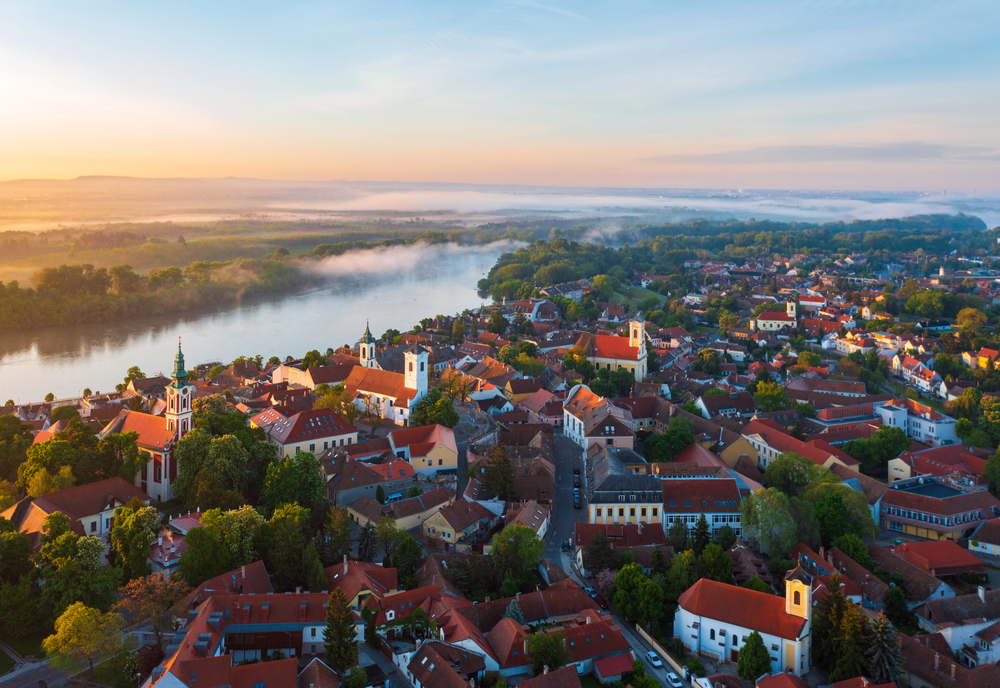
Just outside Budapest, this artist’s colony town maintains a distinctive collection of white buildings with black trim that reflects both Serbian and Hungarian cultural influences. The whitewashed walls historically contained limestone, which provided natural protection against insects and offered modest temperature regulation.
Small splashes of red geraniums in window boxes provide the only consistent color against this carefully maintained monochromatic background.
Chefchaouen, Morocco
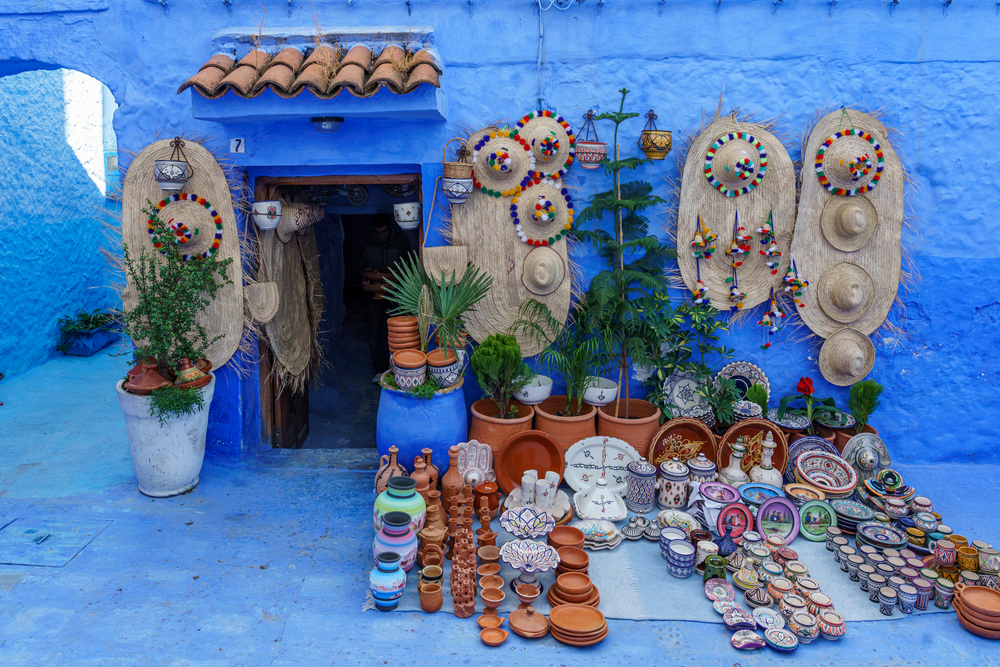
While globally famous for its blue-washed buildings, certain historic districts of this mountain town maintain the original black-and-white aesthetic that predated the blues tradition. The white lime wash historically served as a mosquito repellent, while black decorative elements created visual structure and direction through the meandering medieval streets.
The contrast between the monochromatic and blue sections creates a fascinating study of how color influences the perception of identical architectural forms.
Ouro Preto, Brazil
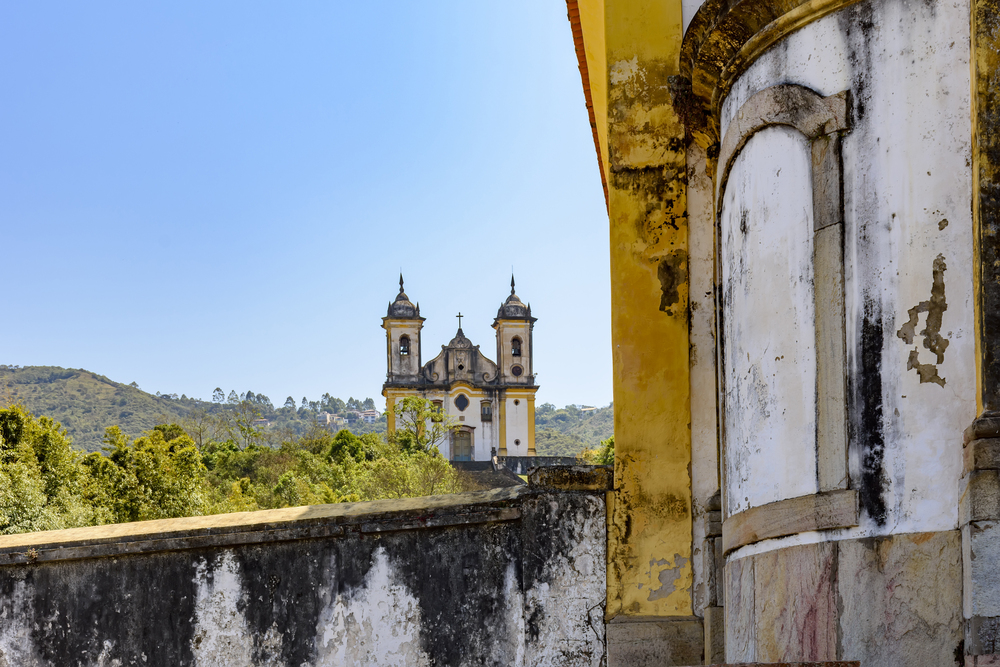
This colonial mining town features Portuguese baroque architecture with whitewashed buildings trimmed with dark hardwood and black iron balconies. The white lime covering protected the structures from the tropical climate, while the black accents reflected the wealth generated from the region’s gold mines.
The town’s position sprawling across steep hillsides creates dramatic vistas where the monochromatic patterns can be appreciated across entire neighborhoods simultaneously.
Like Travel Pug’s content? Follow us on MSN.
Ronda, Spain

Perched dramatically above a deep gorge, this Andalusian town features bright white buildings with dark wooden doors, window frames, and iron balconies that create a classic Spanish monochromatic aesthetic. The white walls historically helped keep buildings cool during scorching summers, while their uniform appearance created a sense of community cohesion.
The dramatic setting against the blue sky makes the black-and-white patterns particularly striking in photographs.
Hoi An, Vietnam
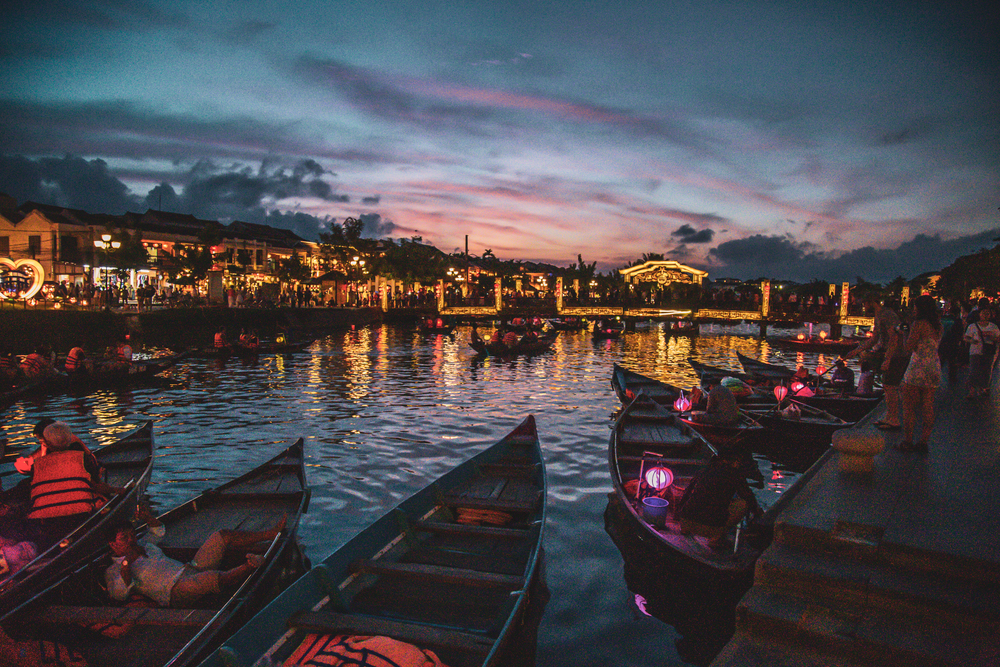
The Ancient Town district preserves traditional Vietnamese tube houses with blackened timber frames contrasting against white stucco, reflecting Chinese and Japanese architectural influences. These narrow buildings feature dark wooden shutters and doors that stand out against the white facades, creating rhythmic patterns along the pedestrian streets.
The monthly Full Moon Festival sees the town illuminated only by lanterns, enhancing the monochromatic mood to spectacular effect.
Nairobi, Kenya

The historic downtown core maintains numerous colonial-era buildings with characteristic black-and-white color schemes that reflect British architectural traditions transplanted to East Africa. The Railway Headquarters and Parliament buildings exemplify this style, with dark trim creating dramatic outlines against white walls that helped moderate temperatures before air conditioning.
These structures provide a stark visual contrast to the colorful modern city that has grown around them.
Like Travel Pug’s content? Follow us on MSN.
Arequipa, Peru

While known for buildings constructed from white volcanic sillar stone, the historic center features numerous colonial structures with stark black trim and decorative ironwork. The Santa Catalina Monastery epitomizes this aesthetic with its black and white striped archways, which create dramatic visual perspectives through its corridors.
The high-contrast design elements reflect Spanish colonial influences adapted to available local materials and dramatic Andean light conditions.
Georgetown, Malaysia
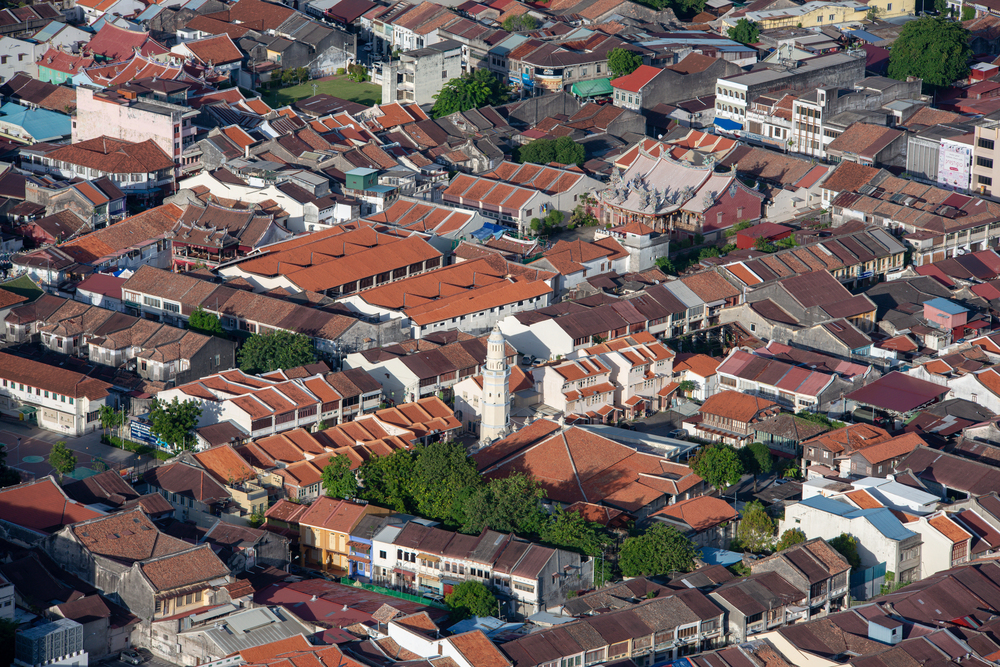
The UNESCO-protected historic center contains remarkable examples of Anglo-Chinese architecture with black shutters, doors, and decorative elements against white plaster facades. The shophouses along Armenian Street showcase this style particularly well, with their five-foot walkways creating covered passages framed in black and white geometric patterns.
These buildings represent a unique fusion of European colonial design with Chinese practical adaptations to tropical conditions.
Évora, Portugal
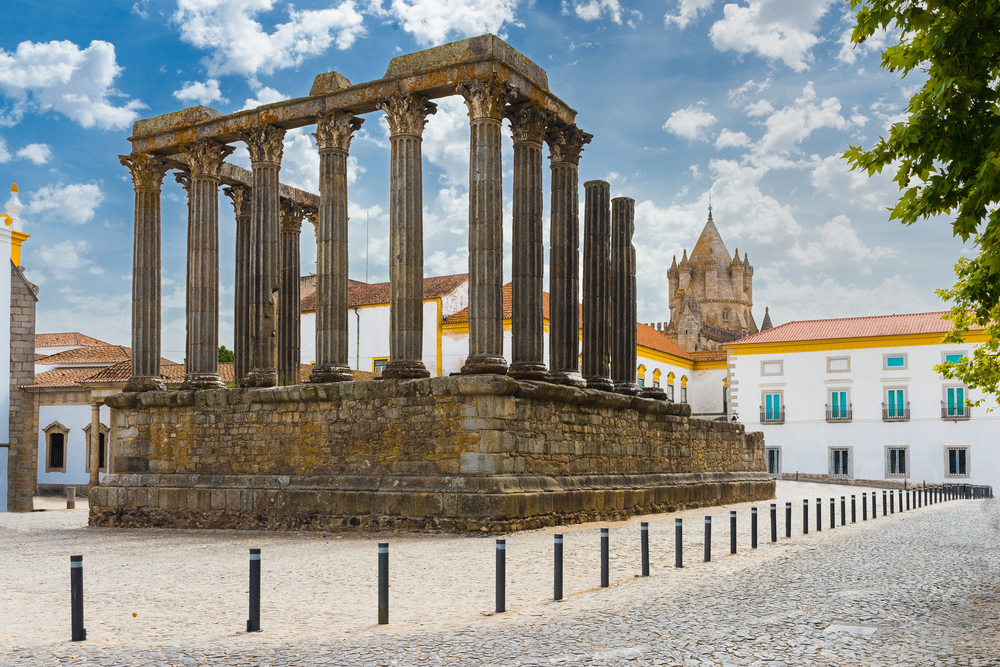
This medieval walled city features whitewashed buildings trimmed with yellow borders—a variation of the monochromatic theme that appears almost black and white in certain light conditions. The uniform white walls originated from practical considerations, as the lime wash protected from both heat and insects.
The contrast between these buildings and the darker granite Roman Temple creates a compelling visual dialogue between different historical periods.
Like Travel Pug’s content? Follow us on MSN.
Tiradentes, Brazil
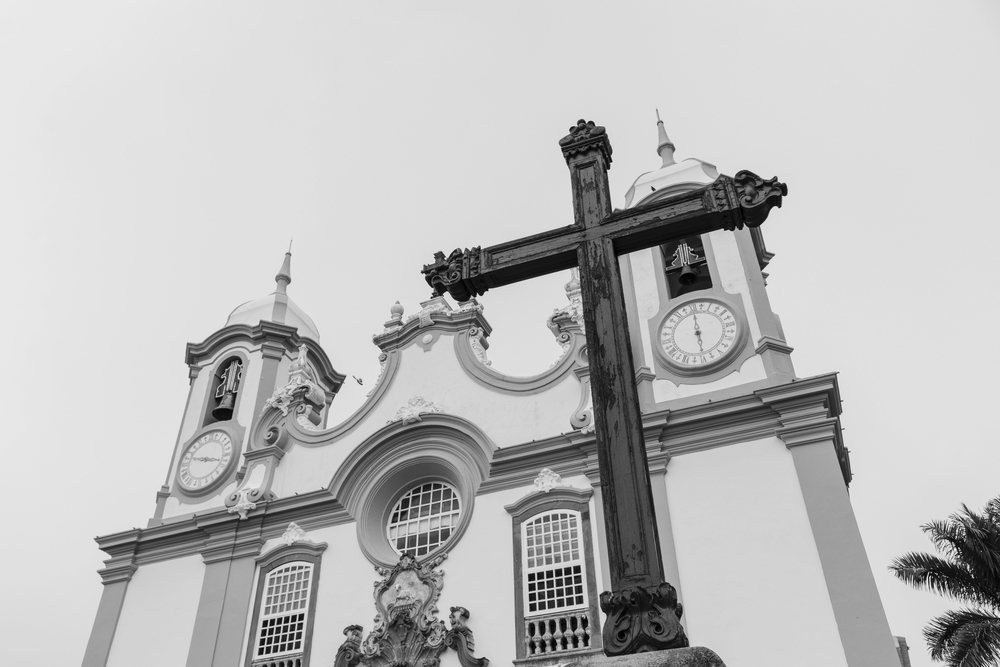
Named after a national hero, this colonial town maintains pristine white buildings with dark blue-black trim and doors that create a distinctive Brazilian interpretation of Portuguese design. The white churches with dark accents stand out dramatically against the rolling green mountains that surround the town.
The preservation of these color patterns was initially practical but has become essential to the town’s identity and tourism economy.
Quedlinburg, Germany
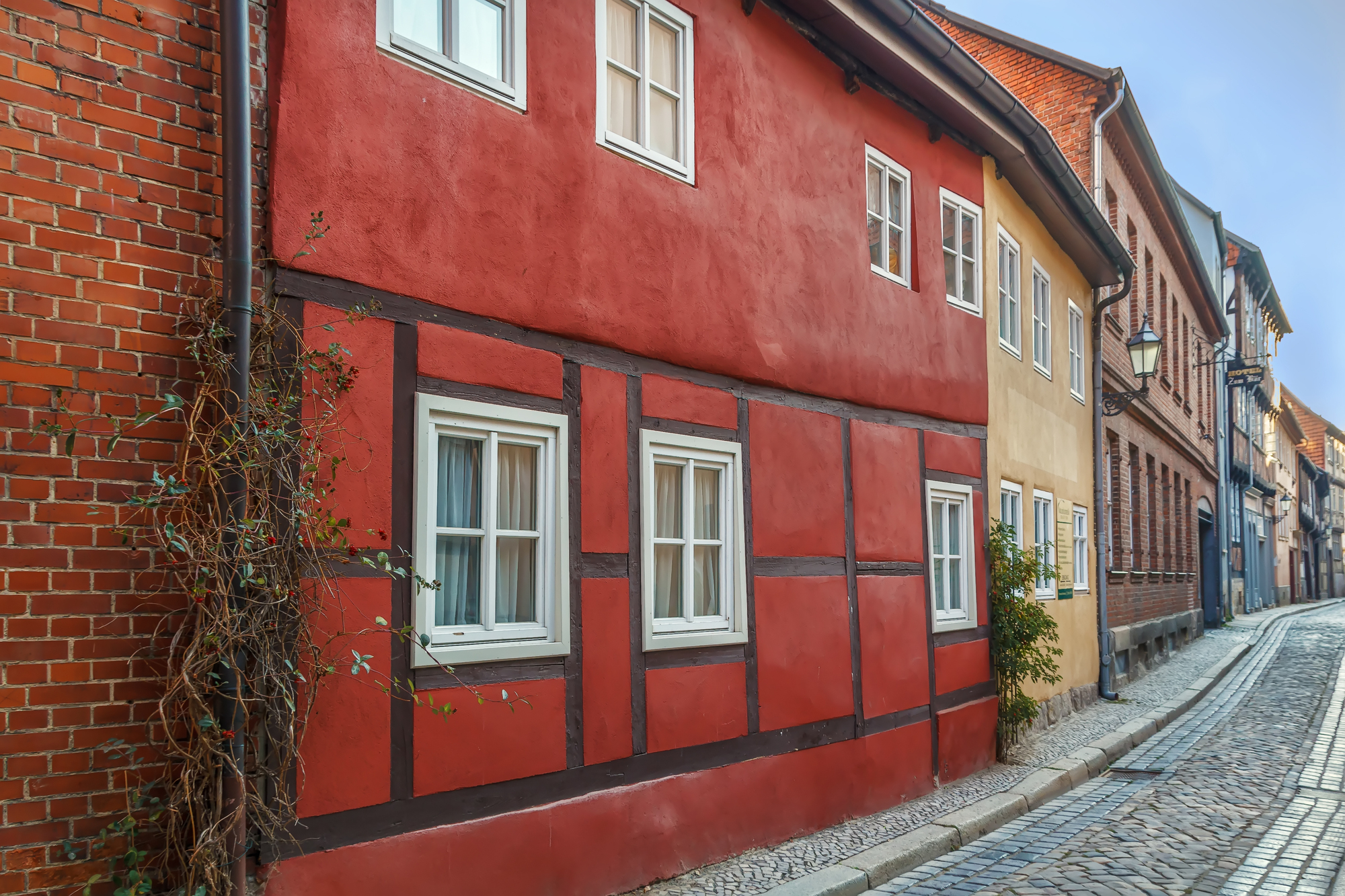
This remarkably preserved medieval town features over 1,300 half-timbered houses spanning six centuries, creating a museum of black and white architectural styles. The intricate patterns formed by the exposed timbers range from simple crosshatches to elaborate decorative designs that indicate the original owner’s wealth and status.
The consistent use of these contrasting colors throughout different historical periods creates a harmonious ensemble despite the variety of building techniques.
Chora, Patmos, Greece
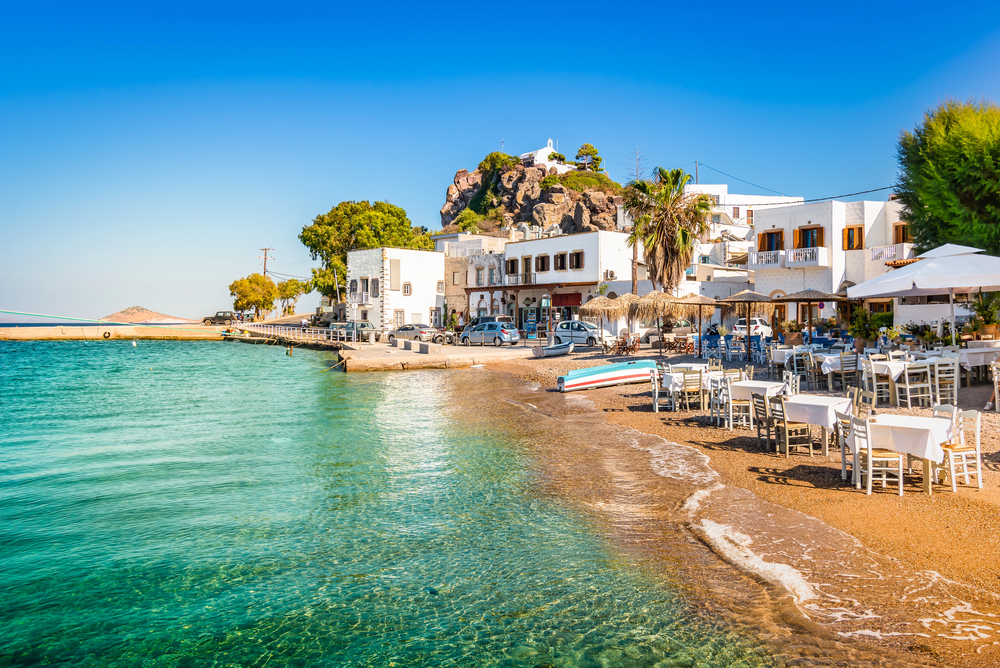
The hilltop village overlooking Skala Harbor features a maze of cubic whitewashed buildings with pitch-black doors, window frames, and railings. The stark white walls historically contained antiseptic lime that helped prevent disease while reflecting the intense Mediterranean sun.
The absence of contrasting colors creates a sculptural quality where light and shadow define spaces more than architectural details.
Like Travel Pug’s content? Follow us on MSN.
San Juan, Puerto Rico

The historic district of Old San Juan contains numerous Spanish colonial buildings with black wrought-iron balconies contrasting against white or pastel facades. The Castillo San Felipe del Morro fortress exemplifies this aesthetic with its dramatic white walls and black stone accents visible from miles out to sea.
These buildings represent the Spanish Empire’s architectural adaptations to tropical environments while maintaining peninsular design traditions.
Alberobello, Italy
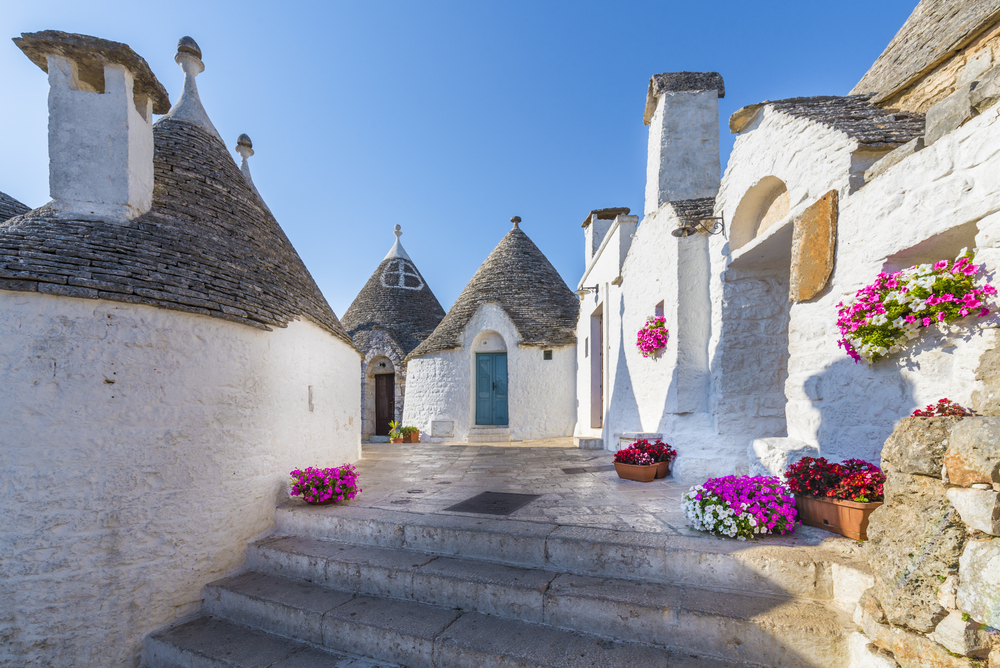
Famous for its trulli—conical stone houses with whitewashed walls and dark gray stone roofs—this Apulian town creates a fairytale-like monochromatic landscape. The circular houses with their distinctive black stone symbols painted on white domes reflect ancient building techniques preserved into the modern era.
The absence of bright colors focuses attention on the unusual geometric forms and the interplay between light and shadow across the curved surfaces.
Český Krumlov, Czech Republic
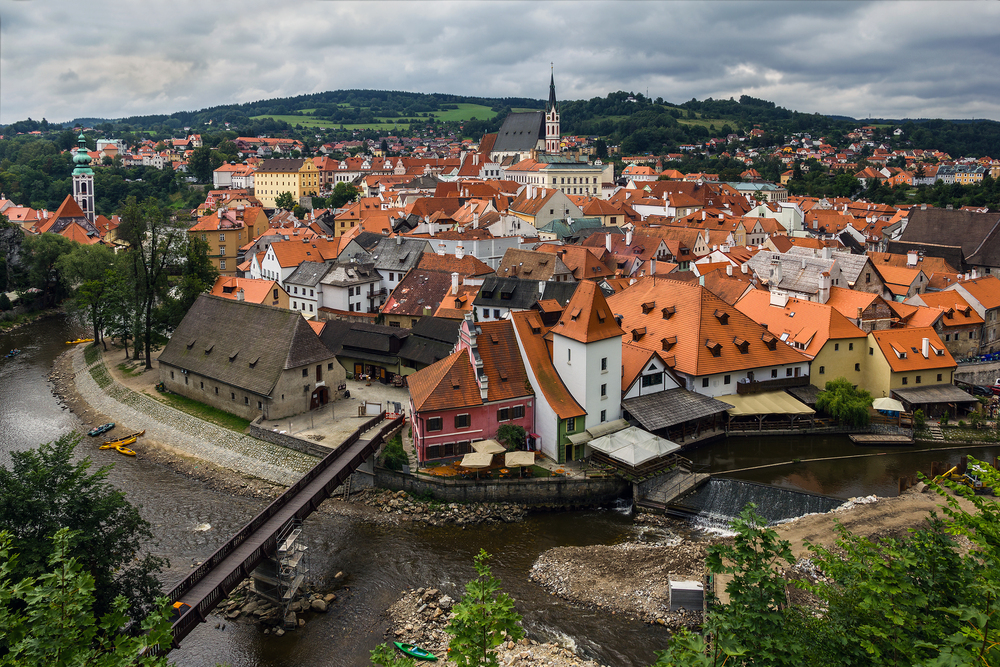
While known for its colorful castle, much of this medieval town features buildings with dark timber elements against white-rendered walls, creating dramatic visual patterns. The riverside buildings reflect both Bohemian and Austrian architectural influences, with the contrasting patterns visible in reflections on the Vltava River.
The uniform color scheme unifies buildings from different centuries into a coherent ensemble.
Like Travel Pug’s content? Follow us on MSN.
Salvador da Bahia, Brazil
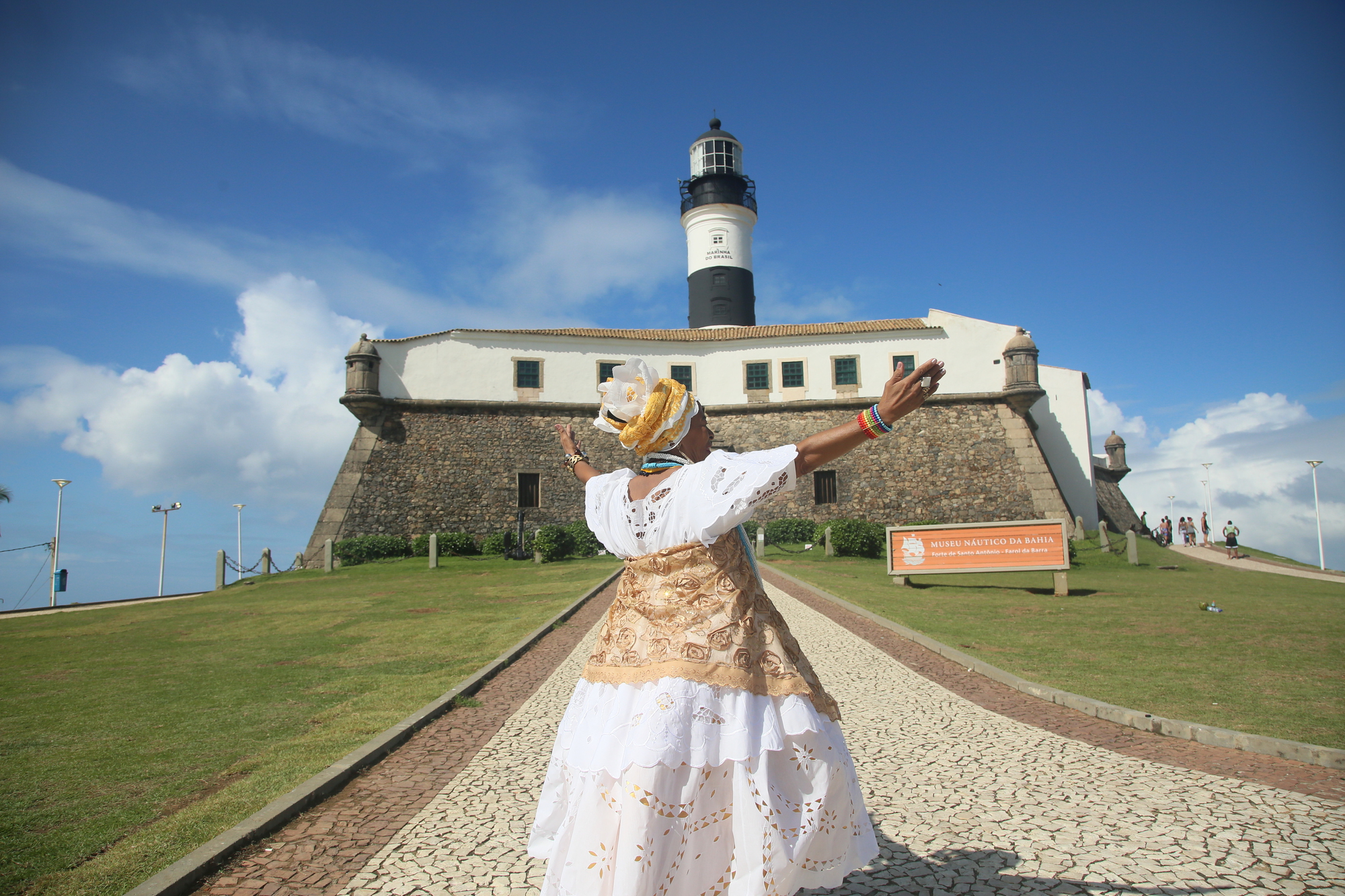
The Pelourinho historic district contains numerous colonial buildings where black trim and decorative elements contrast with white or pastel facades. The distinctive black stone streets provide a ground-level continuation of the monochromatic theme that stretches up through the facades.
This color scheme reflects Portuguese colonial architectural traditions adapted to the tropical Brazilian environment and available building materials.
Sibiu, Romania
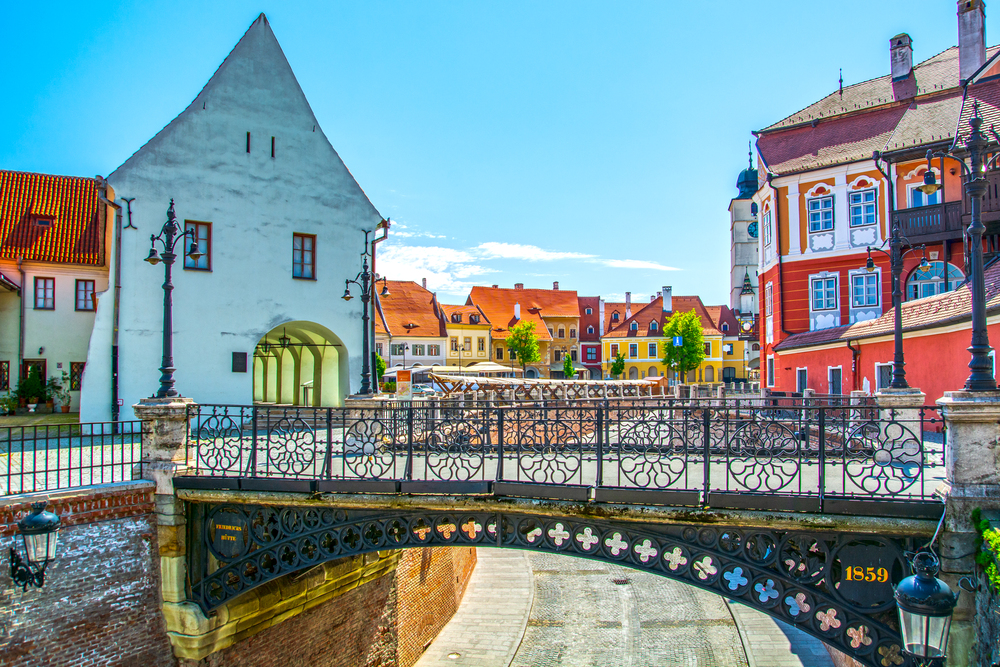
This Transylvanian city features distinctive houses with eye-like windows on the roofs that create a pattern of dark openings against white facades. The Saxon-influenced architecture includes black wrought-iron signs and decorative elements that stand out against the white and cream-colored buildings.
The consistent use of these contrasting elements throughout the historic center creates a cohesive visual identity despite the city’s complex multicultural history.
Broek in Waterland, Netherlands
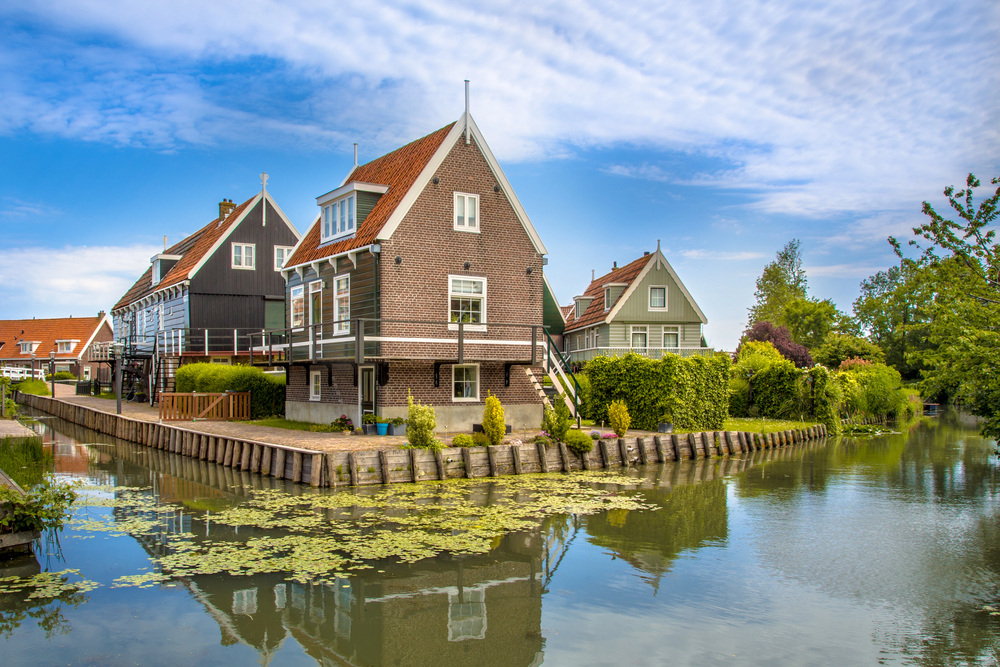
This small village near Amsterdam has been called the ‘cleanest town in the Netherlands’ for its immaculately maintained wooden houses painted in subtle variations of gray, white, and black. The monochromatic palette dates back to the 17th century when the village was home to retired sea captains who maintained this distinctive aesthetic as a sign of refined taste.
The reflection of these buildings in the still canal waters doubles their visual impact.
Like Travel Pug’s content? Follow us on MSN.
Preservation Through Pattern

These monochromatic urban landscapes represent more than aesthetic choices—they embody cultural identities, practical adaptations to local conditions, and living connections to architectural history. While many cities rush toward modernization with glass and steel structures in every color imaginable, these places demonstrate the timeless appeal of reduction and restraint.
Their black and white patterns offer a visual respite from contemporary visual chaos while connecting visitors to building traditions that have proven their durability over centuries. In these remarkable places, history wears its monochrome mood not as a limitation, but as a distinctive signature that continues to inspire architects and travelers alike.
More from Travel Pug

- Cities Growing so Fast You Won’t Recognize Them in 10 Years
- 13 Destinations Where Tourists Regularly Regret Their Trip
- 20 Obscure WWII Sites Even History Buffs Don’t Know About
- 10 Under-the-Radar Mountain Towns That Are Both Affordable and Beautiful
- 20 Abandoned Places That Feel Like Real-Life Post-Apocalyptic Movie Sets
Like Travel Pug’s content? Follow us on MSN.
